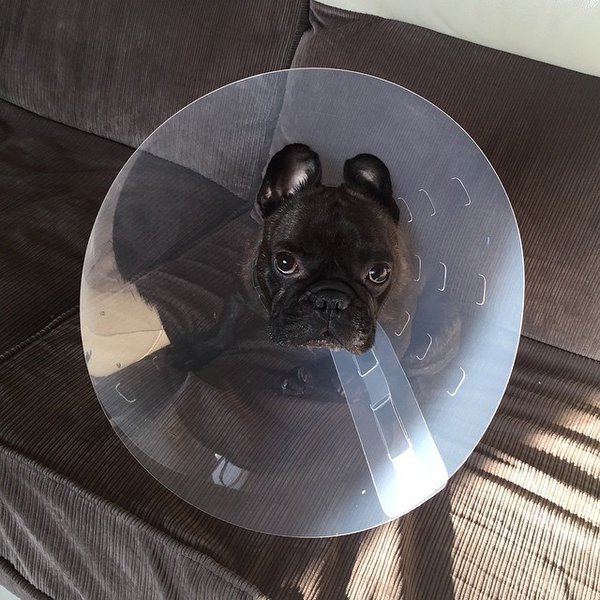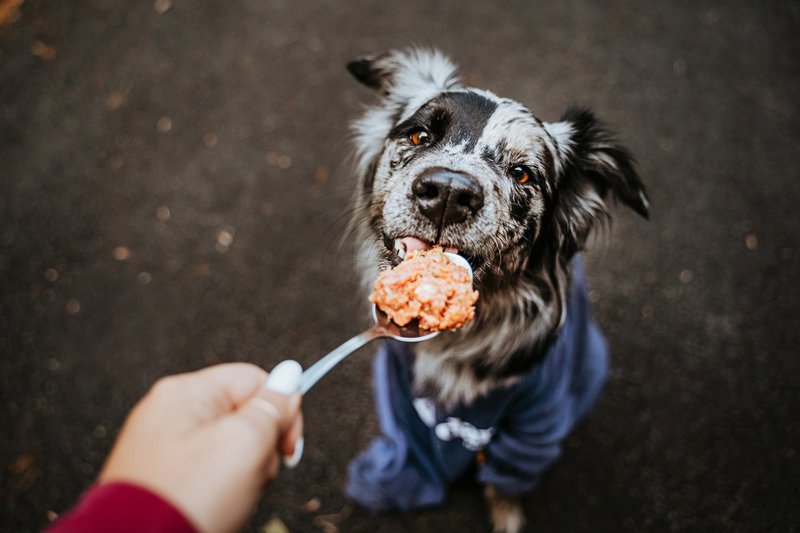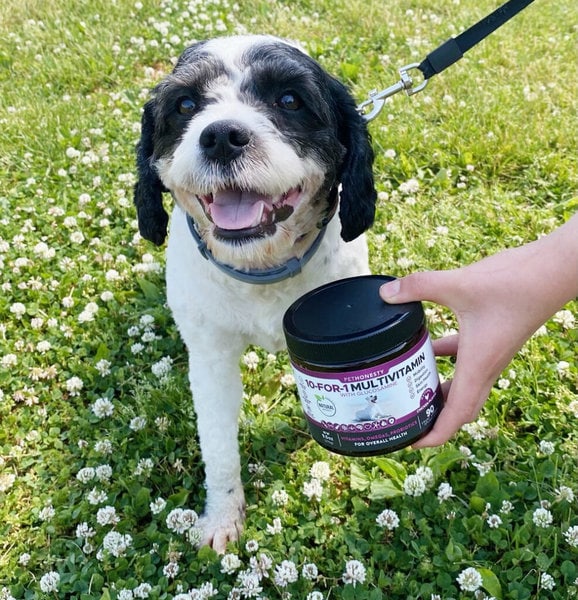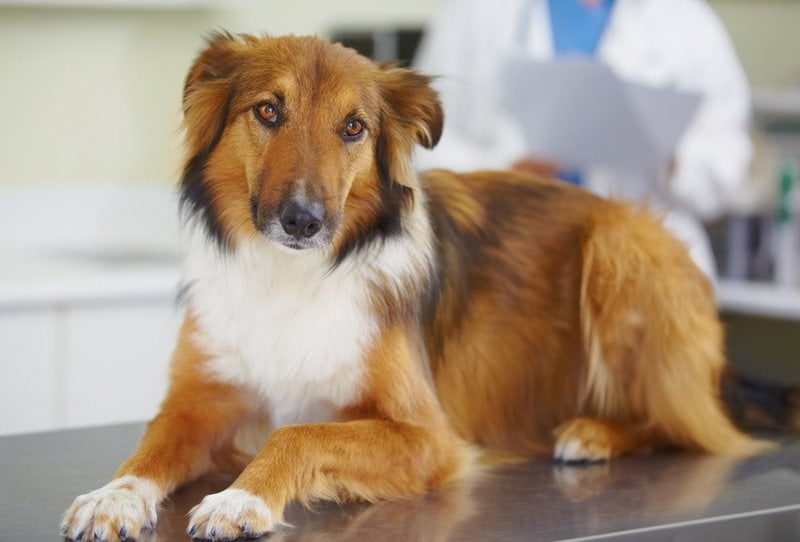If you own a dog, chances are you’ve heard of steatitis and know it’s something to look out for. Yellow fat disease, or steatitis, is a condition leading to the inflammation of fatty tissues that may turn yellow when hardened with time. But what exactly causes steatitis?
One of the most common causes of steatitis in dogs is a deficiency in vitamin E. This vitamin plays an important role in maintaining healthy cell membranes, and its deficiency can lead to inflammation of the fat cells, or yellow fat disease, in dogs.
Learning more about this condition will help ensure proper care for your pup if they develop any symptoms of steatitis. In this blog post, we’ll discuss the common causes of steatitis in dogs so you can arm yourself with knowledge.
What Does Steatitis Mean In Dogs?

Steatitis, also known as yellow fat disease, is a serious medical condition affecting your pooch’s fatty tissues. It results in an increase in the fat content of various organs, especially the liver and spleen. The affected pup may show several clinical signs, such as jaundice, anemia, depression, loss of appetite, and small fat-containing bumps.
Diagnosis of steatitis is usually made through a detailed physical examination and analysis of the liver. Treatment involves antibiotics, dietary modifications, medications, and supportive care. If left untreated, it may lead to complications, such as hepatic encephalopathy and liver failure. Let’s have a wider look at the symptoms of steatitis in a furry companion.
Small Fat-Containing Bumps
Small fat-containing bumps on a dog’s skin are a common sign of steatitis and have several side effects.
In some cases, these bumps can further lead to allergies or dermatitis and may be redness, itching, or discomfort for your pup. If left untreated, this type of bump can lead to infection and open sores, further requiring medical attention.
On the other hand, fatty lipomas are non-cancerous lumps of fat that may appear on your pup’s skin. These are usually slow-growing and harmless but can become uncomfortable or painful if they grow too large.
Loss Of Appetite
Loss of appetite is another common symptom of steatitis and can be seen in dogs with the condition. This decreased appetite can lead to weight loss, dehydration, and other health complications.
In severe cases, steatitis can cause liver damage and even organ failure. Treatment for steatitis typically involves a combination of dietary changes, medications, and supplements to help reduce fat accumulation in your pooch’s liver. The goal of treatment is to restore normal energy balance and liver function.
Lethargy
Your furry companion may suffer from lethargy in steatitis due to the inflammation of the liver. This condition is caused by a buildup of fat droplets throughout the organ, causing it to become inflamed and swollen. As a result, this decreases blood flow through the liver and deprives it of oxygen which is essential for the optimal functioning of this vital organ.
This decrease in oxygen leads to lower energy levels, which can result in lethargy and fatigue. Additionally, toxins can build up as the liver fails to break them down properly, further contributing to a lack of energy and an overall feeling of tiredness and sluggishness.
High Body Temperature
Steatitis leads to an accumulation of triglycerides in the animal’s body tissues, including muscle and fatty tissue. As a result of this abnormal buildup, your canine may experience high body temperatures.
In severe cases, body temperatures can reach dangerously high levels, leading to organ failure and even death. Several possible causes of this disorder include dietary imbalance, low activity levels, genetics, and certain medications.
Shying Away From Playing
Another common indication of steatitis is that your furball will stop playing. This is because the condition causes severe pain and discomfort in the affected areas, making it difficult for your dog to engage in activities such as running and jumping. Additionally, steatitis causes a decrease in energy levels due to inflammation, leading to fatigue and lethargy.
Open Sores
Pups can suffer from many skin conditions, including sores in steatitis. Steatitis is an inflammatory condition of the skin caused by a fat accumulation between muscle fibers or around the base of hair follicles. This condition is sometimes seen as one large sore but can also appear as multiple and small lesions all over the body.
Since you know the symptoms and meaning of steatitis, let us guide you in taking notes on how your pup may get it.
Can Dogs Get Steatitis?

Yes, dogs can get steatitis. Problems with fat metabolisms, such as pancreatic insufficiency or a deficiency in specific vitamins and minerals, typically cause it. It can also occur secondary to an infection, as an inflammatory disorder or vasculopathy.
Here we break down a list of reasons behind how your pooch can actually get steatitis:
Tumors
Tumors can cause steatitis, an inflammation of fat cells in dogs. This condition can arise when tumors invade the surrounding tissue and disrupt the normal functioning of the fat cells.
In some cases, tumors can release cytokines or other special proteins that trigger an inflammatory response, leading to steatitis. As a result, the affected fat cells become swollen, irritated, and painful. In some cases, tumors can also disrupt blood circulation to the area, further contributing to steatitis.
Trauma
Trauma is one of the most common causes of steatitis in your canine. Traumatic injuries can cause damage to the liver and other organs, resulting in inflammation. When this occurs, lipids (fats) accumulate in the affected area and cause steatitis.
Common causes of traumatic injury include automobile accidents, falls from heights, bludgeoning, and bites from other animals. In some cases, steatitis can also be caused by surgical trauma due to the resulting disruption of blood supply to the affected area.
Consumption Of Human Foods

Steatitis, or yellow fat disease, is a potentially deadly condition caused by feeding human foods to your pooch. The condition occurs when the high-fat content of certain human foods accumulates in the dog’s body and begins to cause inflammation of the fat cells. This inflammation causes pain, fever, lethargy, loss of appetite, swelling, and yellowish discoloration of the fat under the skin.
In severe cases, pancreatitis and even death can occur. It is important to note that this condition is preventable by avoiding feeding human foods that are too high in fat, such as fried foods, pastries, butter or margarine, chocolate, and other fatty snacks.
Infections
Infections, particularly those caused by bacteria or parasites, can cause steatitis in dogs. Bacterial infections are often the result of poor hygiene and poorly managed wounds. These conditions allow bacteria to enter the body and infect the fat tissue.
Parasitic infections, such as mites and tapeworms, can also lead to steatitis. The parasites can infect the fat tissue and cause inflammation. In either case, the infection releases toxins that can damage the surrounding cells and tissues, leading to steatitis.
Vitamin E Deficiency
Vitamin E is an essential nutrient for dogs, playing a vital role in maintaining their overall health. However, if your furry companion does not receive enough vitamin E from its diet or supplements, it can develop steatitis.
Unsaturated Fat In Diet
Unsaturated fat in the diet can also cause steatitis, or inflammation of body fat, in your pooch. An excess of unsaturated fats in the diet can lead to an accumulation of toxic metabolites in the white blood cells. This causes fatty deposits in various body parts, particularly around the liver, pancreas, and kidneys.
The inflammation of these areas can cause pain, redness, and swelling, indicating the presence of steatitis. In severe cases, this condition can be fatal if not treated promptly.
Now, let’s find out how steatitis in dogs can be treated.
How Is Steatitis Treated In Dogs?
Treatment can include dietary adjustments, antibiotics, and anti-inflammatory medications. It is important to take your canine to a veterinarian if you suspect it may have steatitis to get a proper diagnosis and treatment. With the right care, your pup can make a full recovery.
In addition to treating steatitis, it is important to prevent it by feeding your dog a balanced diet and visiting the vet for regular checkups. Let’s break down these steps further so they can help keep your pup healthy and happy!
Vitamin E Supplements

If steatitis is suspected in a dog, a veterinarian will likely recommend testing for vitamin E levels in the dog’s bloodstream. If vitamin E levels are low, deficiency is likely the cause, and supplementation may be necessary to deal with this deficiency.
Dietary changes may also be recommended to provide more vitamin E. In severe cases, a veterinarian may prescribe antibiotics or other medications to help reduce inflammation and speed up recovery.
Feed A Low-Fat Diet
Feeding your pooch a balanced diet, including healthy dog treats, such as fruits and vegetables, can greatly reduce the risk of steatitis. Additionally, regular veterinary checkups can help detect any health issues caused by an unhealthy diet.
It is important to remember that feeding human foods to dogs can have severe consequences; therefore, it is essential to avoid offering human foods to your furball. Keep all fatty snacks securely stored out of reach from the curious canine mouth.
Draining Or Removal Of The Lump
Depending on the severity of steatitis, treatment may involve draining or removing the lump. If the infection is localized and superficial, your veterinarian may be able to perform a simple procedure to open and drain the area. This will release any pus built up in the infected area and allow antibiotics to be applied directly to the lump.
In more severe cases, the lump may need to be surgically removed. Once the lump is gone, antibiotics can be given to treat any residual infection. In some cases, removing the entire body fat deposit may also be recommended.





